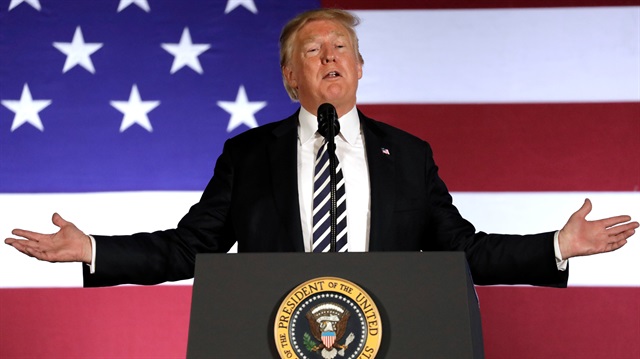
Experts consider the real capacity of other currencies to compete with the U.S. dollar as a world reserve currency
U.S. President Donald Trump’s decision to impose tariffs and sanctions on China, Turkey, Canada and the European Union has shaken the world economy and prompted countries to reconsider their trade policies, but will it lead to a global pivot away from the dollar as the defacto standard currency?
On Monday, Turkish President Recep Tayyip Erdogan attended the sixth Turkish Council Summit in Kyrgyzstan and proposed "doing business with our own currencies instead of U.S. dollars", alluding to the dependence of international trade on the currency.
Although what happens in distant countries like Turkey seems to have no effect in Latin America, the truth is that emerging economies around the world are facing particular challenges. Interest rates in the U.S. have risen, and faced with a greater perception of risk, investors are opting to pull their capital out of emerging markets.
Last week, the butterfly effect was evident on Argentina’s currency, which fell the most since 2002 from 32 to 40 pesos per dollar. Rising interest rates due to inflation, a stubborn fiscal deficit and high external debt are also among the reasons behind the peso’s depreciation.
But this is not the first time that economies are at this crossroad. China has been asking the International Monetary Fund for more than 10 years to reform the international reserve system to create a currency that remains more stable over time and does not depend on a single country, but this is not an easy task.
The U.S. dollar became the reserve currency par excellence in 1944 thanks to the Bretton Woods Agreement, where the rules of the transnational market were established and the World Bank and International Monetary Fund were created.
Today, no currency has the same level of liquidity as the dollar or a bond market of its size. Even for political reasons, many nations want to continue with the U.S. dollar as their reference currency.
"Out of the world’s currencies, the dollar is involved in 86 percent of daily transactions. Two thirds of banks’ reserves are denominated in dollars," said Alex Sierra, a political scientist and internationalist who is also executive president of the Colombian Chamber of Southeast Asia and General Secretary of the Colombo Czech Business Council.
However, going against what in 2002 Hong Kong journalist Henry C.K. Liu called "the hegemony of the U.S. dollar," today more countries are beginning to negotiate transactions in Chinese yuan.
In mid-August, Bangladesh adopted the yuan as the reference currency for commercial activities with China. Pakistan, for its part, has allowed the use of the currency for imports, exports and making financial transactions since January, while India, Asia’s third largest economy, relaxed the rules of indebtedness by allowing companies to increase their debts in yuan.
"With the sanctions that Donald Trump is imposing, an atmosphere of distrust is being created added to the role of countries that are ranked as 'World Class' players such as China. Ten years ago, that country had a situation that few could imagine, and today it holds almost half of the world's dollar reserves [of around $3.16 trillion]", said Giovanni Reyes, a professor and researcher at Rosario University in Bogota.
However, Nelson Vera, head of macro-financial research at Colombia’s National Association of Financial Institutions (ANIF), said that to speak of an expansion of the yuan, China's capital account should first be liberalized and the overregulation that exists with caps on interest rates should be limited.
"This is not something you will see in the next five years. It is normal that as China's GDP reaches significant sizes with a high input of imports, it can allow to accelerate its commercial relations, but it cannot be forgotten that its capital account is still closed and the convertibility of the yuan is not going to let it be a reserve currency as is the U.S. dollar. One can easily see this in the holdings of currencies in the reserves of the main central banks: roughly 80 or 90 percent consist of dollars, euros and the refuge asset par excellence in Asia, which is the Japanese yen.”
Given the fact that new economic blocks are being created that use different national currencies, Sierra reached a conclusion similar to that of Vera.
"The currencies in a possible regional or block integration could not be decoupled from the current functional model of the capitalist system since the vast majority of its operations and reserves are in dollars. That is why India, Russia and China would have a great transition, but it would affect the markets and make them volatile. In addition, emerging countries and developed economic powers generate more than 75 percent of world GDP in dollars. The rest of the percentage is in other currencies."
It remains to be seen whether the yuan or other local currencies can knock the dollar off its throne while emerging economies continue to cope with Trump's frantic decisions amid an unprecedented currency war.




